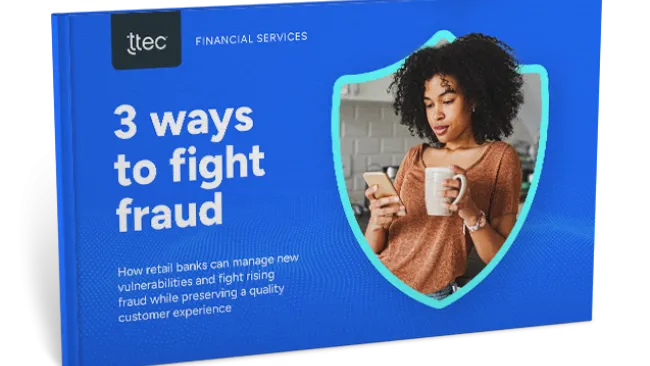Online photo printing company PhotoBox built its business by tapping into its customers’ creativity and enthusiasm. As a resource for photographers of all skill levels, it serves more than 8.5 million customers in Europe, primarily in the U.K., France, and Germany. Customers go online to share and print their digital photos, customize items like mugs and calendars, or build their own photo website.
Photography is a very personal endeavor, capturing memories or creating artistic representations of everyday life. Customers want a brand they can trust to work with their treasured photos. Realizing this, the company made a commitment to customers to deliver an exceptional experience and to offer the products and services most important to them. Renaud Besnard, operations director, goes so far as to say the company is “customer-obsessed.”
PhotoBox’s customer obsession was the result of a fiscal wake-up call in 2008. After merging with French competitor Photoways in 2007, PhotoBox redesigned its website in early 2008 to reflect the combined company. However, the process was done with little customer input, resulting in a poor customer experience and churn. User activity declined nearly 30 percent from the same timeframe the prior year and its customer service organization saw a 29 percent increase in inquiries (6,000 contacts) the first week post-launch.
“The issues encountered after the website relaunch highlighted how the lack of insight into customer engagement was really our number one vulnerability in protecting our market share,” Besnard says.
CEO Stan Laurent directed the company to fix the situation by taking customer experience cues from e-commerce leaders such as Amazon and eBay. PhotoBox also applied deep analytics and customer-based metrics to balance the art and science of the relationship across the company. And so the Spotless Service program was born.
Delivering Spotless Service
Spotless Service is a companywide initiative designed to focus on all aspects of the business that impact the customer. “The goal is to place the customer at the center of everything we do and ensure that we are customer-obsessed,” Besnard says.
PhotoBox knows that the customer experience is everyone’s responsibility. “We strongly believe that the customer experience includes every single step of the process: production, the website, shipping, customer service,” Besnard says. Therefore, the program’s success is based on a metric that all employees are evaluated on: contact ratio, which is the ratio of inbound contacts versus orders.
CONTACT RATIO
(new incidents + updated incidents + chat sessions + calls)
______________________________________
orders placed per week
“[Contact ratio] is a simple metric, but there’s plenty behind that number,” Besnard says. “The principle is that if contact ratios are under control or decreasing it means customers are happy and getting the service they require.”
In fact, the metric is so important it’s tied to employees’ performance goals. “If we are customer-obsessed and if the Spotless Service program is to be key in our strategy, we need to translate that into compensation,” he adds. “It is part of everyone’s objective.” Every department is accountable for controlling contact ratios.
PhotoBox invested capital and resources to improve the customer experience and contact ratios. The company launched proactive live chat and co-browse tools on its site, created a single customer record with a 360-degree view of customer interactions across all contact channels, employed analytics tools to understand customer satisfaction indicators, rewrote its customer service escalation rules to reduce transfers giving more authority to tier 1 associates to solve problems, and reworked associate routing based on language, content, and subject. “We view these as critical tools for accomplishing customer satisfaction that encourages customers to repeat-order with us, drive word-of-mouth recommendations, and, as a consequence, improvements to revenue and market share,” Besnard says.
The company also delved into its voice-of-the-customer data, collected through surveys, contact center interactions, live chat records, focus groups, online community posts, and its 9,000-member Insider customer program. The goal is to ascertain what about the company and its processes is working well, identify and resolve any red flags as early as possible, and encourage co-creation of products.
PhotoBox also publishes a regular blog, maintains a Facebook fan page with more than 14,000 fans, and has a Twitter account with 2,600 followers. The goal is to interact with the community by promoting new offerings, sharing site updates and information, soliciting feedback, and providing a platform for customers to share best practices and highlight each other’s photos.
One customer experience improvement resulting from the insight is a “30-minute cooling off period,” where customers can change or cancel an order up to 30 minutes after submitting it. The firm also improved order tracking and email notification of delayed orders, as well as simplified the photo upload procedure.
“Our customers are passionate about photos, and.... They feel strongly about our service,” says Mark Chapman, cofounder and managing director of U.K. operations. “They are vocal in sharing their thoughts and feelings and are the first to advise on how we can improve specific products…We see listening to our customers’ ideas as a core part of our continued success.”
Segmentation improves service delivery PhotoBox customers are segmented into six demographic groups for differentiated treatment strategies, three of which are characterized by personas:
- Pro-users: professional photographers with high volumes of orders.
- PhotoBox Plus: the top 500 customers by their spend.
- Partners: customers who use PhotoBox through partners, such as retail outlets.
- Amy: soccer moms in their early 30s with young families. They place regular orders, and are active in social media sites. This is PhotoBox’s largest segment.
- Christine: older women, whose children are grown. Not as tech-savvy as Amy.
- They place ad-hoc orders, and are loyal.
- Matt: young consumers, typically 20–25, who shop around to find promotions. They are less loyal than the other segments.
Pro-users and PhotoBox Plus customers are considered the company’s most valuable customers and get access to a dedicated phone line, email address, and pricing discounts. Customer service calls are answered by senior associates. They must solve the issue within two hours, instead of the general eight-hour time frame. “If we know who the customer is, we know where to direct the queries and how to provide better service,” Besnard says.
The company also segments customers based on behavior on the site. For example, new customers get a welcome message when logging in. Customers who upload images will receive a communication about potential products of interest, and a customer’s first order will trigger an online survey.
Customers are placed into segments based on three dimensions. When new customers join, PhotoBox segments them as casual or professional users. Next PhotoBox looks at the types of products they order. Do they buy photo prints only, do they share digital pictures, or order “goodies”—wall decorations, mugs, and other items? Finally, the company looks at their propensity to order more. How often do they order? Do they try new products or stick to their regular orders? These questions help match customers to the appropriate segment, as well as determine if or when to move them.
“Overall, segmentation is not only a tool in customer service to have a different service level,” Besnard says. “It’s a way to drive momentum around our products with different types of customers. Clearly, there are some customers who are passionate about photo books, for example. That’s a key community of customers and we need to speak to them about books and about creativity around these types of products.”
Customers also receive weekly communications based on the company’s Recency Frequency Monetary (RFM) model.
Company culture as a service driver
Spotless Service can’t happen without support from all levels of the organization. At PhotoBox, all employees are responsible for delivering a positive customer experience. Chapman sponsored the initiative, and is supported by Besnard in operations and department heads from customer support, sales and marketing, technology, and production.
The customer service and production teams sit side by side to work collaboratively. In addition, all new employees, regardless of department, must spend at least one day processing orders and listening to customer calls. In November CEO Laurent spent several days in the customer service department to get a feel for the experience. “[Employee involvement] is the best possible way to influence the staff DNA around customers,” Besnard says.
Uniting the company around the contact ratio metric has been the tipping point in PhotoBox’s cultural transformation, Besnard says. As noted previously, each employee has the control and reduction of contact ratio as a performance objective and every bonus is linked to it. “The idea was to make everyone acutely aware how their role can impact the customer experience, but also how, as an employee, they could benefit from this myopic focus on the customer experience.” Department heads developed metrics for their teams that ultimately link to the customer’s experience and satisfaction.
The science behind the growth strategy
Analytics and measurement are the linchpins in PhotoBox’s customer growth strategy. “It’s difficult to define the voice of the customer,” Besnard says. “You can be overwhelmed with meaningless data. It was extremely important for us to invest a lot of time and effort in analytics about what our customers say. On top of that, it’s important that the management team drive corrective action and create improvement plans based on what they consider important.”
The company tracks monthly, weekly, and even daily metrics, and conducts “weekly huddles” with the heads of operations, sales and marketing, and IT to track progress. Monthly steering meetings involve the CEO, CFO, and CTO to chart progress. “We gather in the same room once a week and the only topic is customer feedback,” Besnard says. “The ‘customer-obsessed meeting’ is the most important meeting of the week.”
Each department has a dashboard that charts the progress of their projects as they relate to customer satisfaction. Besnard says the team distributes actions and priorities to each department based on customer insight. Daily measures include contact ratio, total number of incidents across channels, first-contact resolution, proportion of emails answered in one work day, and proportion of calls answered within 30 seconds.
Weekly measurements look at root causes and actions from Web-related issues, order delay queries, product quality defects, and product information accuracy. On a monthly basis, PhotoBox tracks contact-versus-order ratio, average handle time, email answer performance, chat service level, proportion of orders dispatched within the due date, redo rate, refunds (customer account versus revenues), complaints due to quality issues, Net Promoter Score, and the number of people who referred a friend.
Net Promoter surveys are sent out two weeks after a customer’s first order and then again after the first repeat order. Customers rank their overall satisfaction, last purchase experience, the likelihood to repurchase, and likelihood to recommend to a friend. The company asks customers who give a rank between 1 and 4 whether they are willing to be contacted to discuss the issue causing the low ranking.
The refer-a-friend program, launched in May 2008, is predicated on customer satisfaction and loyalty. With it, customers act as brand ambassadors. They are offered discounts and coupons for referring their friends. PhotoBox tracks on a daily, weekly, and monthly basis the number of unique customers who refer a friend, the number of friends referred, the number of referees who register, and the number of referees who place a first order.
“My best advice is to develop great customer analytics that go in depth into the reasons customers are happy, not ordering anymore, etc.,” Besnard says. “It was extremely important for us to invest a lot of time and effort in analytics about what our customers say.”
Picture-perfect results
Since launching the Spotless Service program, PhotoBox has seen impressive results. Its customer base grew by 44.5 percent from 2008 to 2009, and the ever-important contact ratio metric dropped from 20.2 percent to 16 percent. Market share grew to 37.46 percent from 32 percent in 2007.
Also, the number of new referred customer registrations increased by 24 percent and new referees placing orders increased by 45 percent. More than 81,000 unique customers referred a friend, generating £260,184 in new orders and high NPS scores. What’s more, sales from existing customers grew by 15 percent, and 50 percent of all customers now opt for at least two premium options per transaction.
The ultimate goal of the company is to grow the business while containing contact center and operating costs. Since the program launched, customer insight has led to a reduction of customer service costs versus revenue equating to £240,000 per year. In 2010 the company anticipates operational savings of £600,000, and forecasts £1 million in operational cost savings for 2011.
“By empowering the customers, trying to reduce incoming contacts, and giving a better customer experience, we can keep growing quite rapidly and encourage new creativity while maintaining a stable contact center in terms of size,” Besnard says.
Next steps
While Besnard is pleased with the progress of the Spotless Service program, he says it’s continuous. As products become more complex and customer expectations rise, the company will continue to listen, interact, and participate. “We need to simplify the experience in spite of more products and features,” he says.
PhotoBox is also beginning to tackle the challenge of global expansion. The company’s goals are to acquire customers in Scandinavia and Eastern Europe.
Besnard says any new programs will revolve around the customer. “The customer experience strategy closely aligns with our overall business goal of securing and growing market leadership.”

















